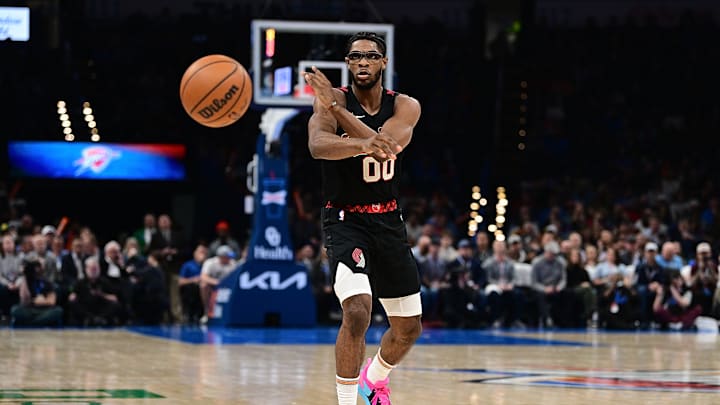The 6-9 Portland Trail Blazers have looked much improved in the past handful of games compared to how they started off 2024-25. Overall, they are playing better, which largely has to do with key players Shaedon Sharpe and Robert Williams III getting healthy and making a significant impact. In many regards, they look like a brand-new team. However, there is also a major issue that continues to exist: playmaking.
It was a glaring issue last season, and now, with Malcolm Brogdon out of the picture, it doesn't appear to be improving anytime soon. Anfernee Simons essentially missing the Blazers' past four games hasn't helped. But having a combo guard return as the team's point guard to initiate the offense isn't going to help enough. As evidenced by these multiple worrisome stats, it's a much bigger roster construction issue that goes beyond just one player.
Blazers struggle in key playmaking categories
Note: Stats are through games prior to Nov. 21
Second worst in assists
The primary category that GM Joe Cronin must consider when making any potential deals before the February trade deadline is assists per game. It's no surprise that, out of the bottom seven teams in assists per game, six of them have losing records, with the Houston Rockets being the only exception.
Rank | Team | Assists |
|---|---|---|
30 | Philadelphia 76ers | 21.2 |
29 | Portland Trail Blazers | 21.5 |
28 | Houston Rockets | 22.8 |
27 | Milwaukee Bucks | 23.2 |
26 | Charlotte Hornets | 23.5 |
Dead last in assist ratio
It gets even worse when considering each team's assist ratio, which is determined by the percentage of a team's possessions that end in an assist. The Blazers are dead last in this category, which further emphasizes their need for more playmaking and overall ball movement.
Rank | Team | Assist ratio |
|---|---|---|
30 | Portland Trail Blazers | 15.5 |
29 | Philadelphia 76ers | 15.9 |
28 | Houston Rockets | 15.9 |
27 | Charlotte Hornets | 16.8 |
26 | New Orleans Pelicans | 17.2 |
Second worst in turnovers
Not only are the Blazers not moving the ball well, but they are also careless with it. It's not surprising that this is an issue for Portland since they are the second youngest team in the league with an average age of 24, which is only older than the Oklahoma City Thunder.
Rank | Team | Turnovers |
|---|---|---|
30 | Utah Jazz | 18.4 |
29 | Portland Trail Blazers | 17.4 |
28 | LA Clippers | 17.3 |
27 | Memphis Grizzlies | 17.2 |
26 | Toronto Raptors | 16.5 |
Dead last in assist-to-turnover ratio
Since the Blazers are second worst in assists and dead last in turnovers, it makes sense that they are far and away the worst assist-to-turnover ratio. The only team that comes even remotely close is the Utah Jazz, another rebuilding Western Conference team that also lacks a floor general to help optimize possessions.
Rank | Team | Assist to Turnover Ratio |
|---|---|---|
30 | Portland Trail Blazers | 1.24 |
29 | Utah Jazz | 1.31 |
28 | LA Clippers | 1.45 |
27 | Charlotte Hornets | 1.45 |
26 | Philadelphia 76ers | 1.46 |
Why do the Blazers rank so poorly in these categories?
None of the Blazers' current playmakers are reliable enough to generate offense consistently. Simons and Dalano Banton are scoring machines but not necessarily pass-first point guards. Scoot Henderson could get there eventually but is still undergoing growing pains in his second season. Deni Avdija has also been relatively disappointing in this department, with nearly a 3:2 assist-to-turnover ratio.
This isn't just a concern for Cronin; Chauncey Billups is also responsible. Portland goes through way too many offensive possessions of players standing around on the perimeter. As promising as Shaedon Sharpe has looked in his return from injury (with three games of scoring at least 20-plus points), the Blazers don't have an elite player that can consistently operate in isolation situations to the point where it's an effective offensive scheme.
When players like Luka Doncic or James Harden operate one-on-one, it's also to get another help defender over to create opportunities for open teammates. When the Blazers do it with Jerami Grant, Simons, or even Deandre Ayton in the post, it's often only with the intention of that particular player scoring. They are too one-dimensional and need to get more overall player movement, whether that's pick and rolls, cuts, back screens, etc.
